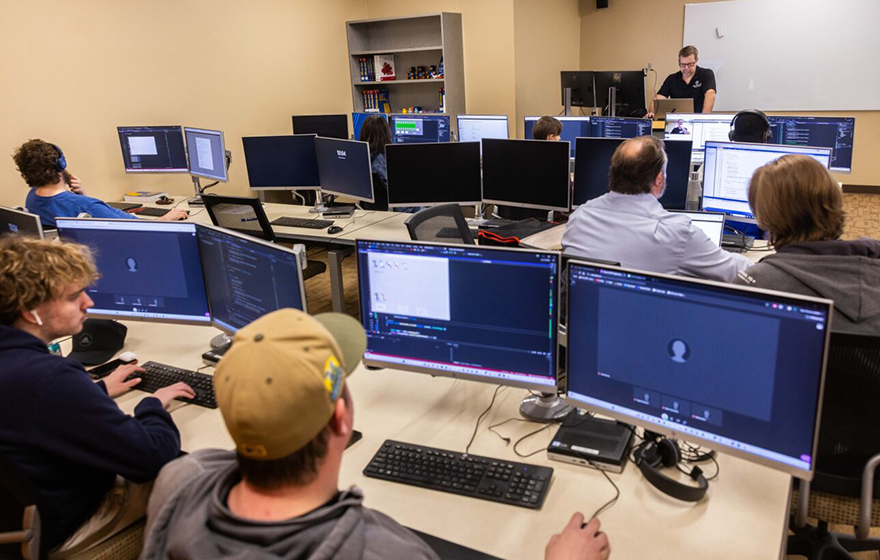Committed Developers vs. In-House Teams: Which Is Right for You?
The choice in between using committed designers and maintaining an internal group is a significant one that can influence the trajectory of your projects and general organization approach. Dedicated designers offer a degree of flexibility and specialized competence that can be useful for certain, short-term initiatives. Alternatively, in-house teams add to a natural business society and a nuanced understanding of lasting goals. By taking a look at vital aspects such as spending plan, task scope, and preferred control, you can much better identify which method aligns with your organizational demands. However, the ramifications of this choice extend beyond immediate results-- take into consideration the wider effect on your company landscape.
Recognizing Dedicated Designers
The expanding demand for specialized abilities in the tech sector has led to the appearance of committed programmers as a viable solution for many organizations. These experts are typically gotten on a task basis, permitting companies to leverage certain proficiency without the long-term commitment linked with full-time hires. Dedicated programmers are usually embedded within a customer's team, giving versatility and scalability to meet project requirements.
This version allows organizations to access a worldwide ability swimming pool, which is especially helpful in a quickly advancing technological landscape. Devoted designers can be sourced from different geographical places, ensuring that firms can locate the ideal skill set at affordable prices. They commonly bring a riches of experience and understanding, having actually serviced diverse tasks across different sectors.
Additionally, dedicated designers can focus exclusively on the jobs available, improving performance and performance. They are furnished to integrate flawlessly into existing process, teaming up very closely with in-house groups to achieve job goals. This technique not just lowers the concern of employment and training however also permits companies to remain dexterous, adjusting quickly to altering market demands and technical developments.
Advantages of In-House Teams

Moreover, internal teams have a tendency to have a much deeper understanding of the firm's mission, worths, and objectives. This positioning can enhance staff member interaction and inspiration, as employee feel more attached to their job and the organization's success. Furthermore, having a dedicated in-house group permits far better positioning of approaches and goals, as these members are regularly concentrated on the firm's concerns.
Internal groups also help with quicker decision-making processes, as they can react extra quickly to adjustments and difficulties. The well established partnerships and knowledge with company protocols enable streamlined process and decreased miscommunication. Ultimately, the mix of a natural culture, alignment with organizational objectives, and efficient communication makes in-house groups a useful possession for lots of companies, especially those looking to grow long-lasting growth and innovation.
Expense Factors To Consider
When evaluating cost factors to consider, both in-house teams and dedicated designers present distinctive economic ramifications for organizations. Involving dedicated designers usually entails a pay-per-project or hourly price design, which can be economical for businesses with fluctuating task needs. This method permits versatility in scaling resources up or down, making certain that business only spend for the services they need.
On the other hand, in-house teams entail repaired prices, consisting of incomes, advantages, and overhead expenses such as office and devices. While this design uses higher control and prompt availability of sources, it may result in greater long-term costs, specifically image source if the workload does not warrant a permanent staff.
Additionally, business need to consider the concealed prices related to recruitment and training of internal employees, which can better stress budgets. In many cases, the time and sources invested on handling an internal team can interfere with the company's core company goals.

Project Management and Versatility
Project administration and flexibility are critical aspects that affect the choice between dedicated developers and internal teams. Dedicated programmers normally offer a high degree of flexibility, enabling organizations to scale resources up or down based upon task needs. This dexterity can be especially advantageous for services experiencing rising and fall work or those looking for to innovate swiftly. Committed teams typically have established processes for managing jobs successfully, leveraging particular methods like Agile or Scrum, which facilitate iterative progress and flexibility.

Eventually, the selection in between in-house teams and specialized designers depends upon the desired degree of versatility and the details task monitoring demands. Firms must review visit site their functional characteristics, task intricacy, and resource accessibility to establish which alternative straightens ideal with their critical goals.
Making the Right Option
Choosing the appropriate development strategy-- internal teams or specialized developers-- needs a mindful assessment of different variables that line up with a business's strategic objectives. On the other hand, internal teams can supply far better connection and combination with existing employees.
Next, evaluate your budget plan. Dedicated designers usually offer a cost-efficient solution for short-term projects, while internal groups might sustain higher lasting expenses because of wages, advantages, and overhead prices. Evaluate the degree web agency ecommerce of control and collaboration desired; in-house groups normally promote stronger communication and alignment with company culture.
If prompt outcomes are required, devoted designers can be onboarded rapidly, whereas constructing an in-house group takes time for employment and training. If constant advancement is crucial, spending in an internal group might yield far better returns over time.
Verdict
In conclusion, the decision in between in-house groups and dedicated programmers pivots on project requirements and organizational objectives. On the other hand, in-house teams grow a natural culture and much deeper positioning with long-lasting goals.
The decision in between making use of dedicated developers and maintaining an in-house team is a considerable one that can impact the trajectory of your projects and overall company approach.Task monitoring and adaptability are essential factors that affect the choice between specialized developers and internal teams. hire dedicated developers.In contrast, internal groups might stand out in maintaining a consistent job administration structure due to their knowledge with the organization's culture and lasting goals. Dedicated developers frequently provide an affordable option for short-term tasks, while internal groups may sustain higher long-term costs due to incomes, advantages, and overhead expenses.In final thought, the choice in between in-house teams and specialized designers pivots on task demands and organizational objectives